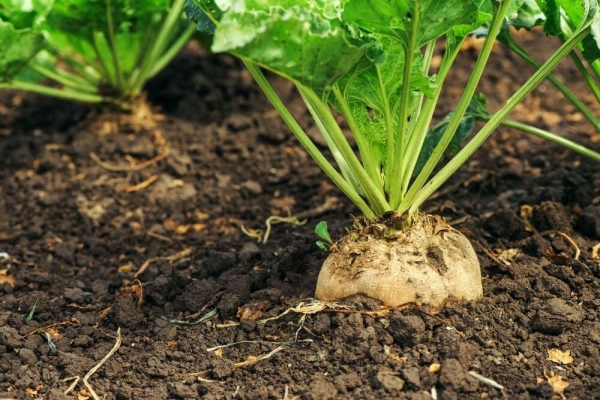
The results of the harvesting campaign were considered at the Government session chaired by Prime Minister Olzhas Bektenov. The total harvesting area of agricultural crops this year totalled 23.3 million hectares, of which 16.7 million hectares are occupied by cereals and leguminous crops, primeminister.kz reports.
Minister of Agriculture Aidarbek Saparov noted that the harvesting of grain crops in the country has been completed, harvesting of maize for grain continues. Harvested 16.6 million hectares of grain and leguminous crops, which is 99.7% of the total harvested area. With an average yield of 16 c/ha, 26.5 million tonnes of grain have been threshed, up from 17.1 million tonnes last year.
High yields have been achieved due to favourable weather conditions and, of course, the results of proper application of agro-technologies, namely through the use of quality seeds, mineral fertilizers and effective plant protection,” the minister said.
In the southern regions, high yields are observed in Kyzylorda and Turkestan regions, as well as in Zhetisu. Among the main grain-growing regions, the highest figures are in North Kazakhstan region: the average yield was 18.6 c/ha. In Akmola region the yield was 14.1 c/ha, and in Kostanay region – 14 c/ha.
In these regions, even medium-sized farms, strictly observing agrotechnical measures, received above-average yields. For example, in Zhambyl region of North Kazakhstan region the farm Ak-Zher 210 LLP obtained wheat yield of 42.5 c/ha, in Kostanay region Sarykol Agro LLP – 40 c/ha, and in Akmola region Svobodnoye LLP – 35 c/ha.
However, in the same regions there are farms that do not follow agro-technologies: they use poor quality seeds, do not apply fertilisers and poorly apply plant protection products, relying only on good weather conditions. As a result, their indicators were much lower than the average for their region. For example, in Kostanay region, Agro Zher LLP in Mendykara district got 5 c/ha of wheat, and in Akmola region, Donskoy Agro LLP in Zharkainsky district got 5.4 c/ha.
There are such cases in all regions. In this regard, I ask regional akims to pay special attention to explanatory work with farms, especially with those who do not follow the technology and rely only on the weather. Although the Government has created all conditions, starting from preferential financing and ending with diesel fuel. In addition, it is important to properly inform agricultural producers about counter obligations, which are introduced from 1 January 2025 and are aimed at increasing the volume of gross agricultural output,” the Minister said.
Taking into account the completion of grain harvesting, agricultural machinery has been redeployed to the harvesting of oilseeds. Harvesting has been carried out on the area of 1.9 million hectares, which is 66% of the harvested area, gross harvest of oilseeds is 2.1 million tonnes with an average yield of 10.7 centners per hectare. The gross harvest of potatoes was 2.8 million tonnes with a yield of 236 c/ha. Vegetable crops were harvested 3.8 million tonnes with a yield of 309 c/ha. A record sugar beet harvest is expected this year. The crop has been harvested from an area of 10 thousand hectares, or 40%, with a yield of 540 c/ha; 549 thousand tonnes have been harvested. 432 thousand tonnes of sugar beet were delivered for processing. Rice harvesting was completed in full; yield was 57 c/ha, 562 thousand tonnes were harvested. Cotton was harvested from an area of 74 thousand hectares, or 69%, with a yield of 25 c/ha; 185 thousand tonnes were harvested.
Due to observance of agro-technologies on cotton, in particular due to use of modern systems of drip irrigation, the farm of “Turkistan makta agroөnerkәсіptіk keshenі” LLP in Turkestan region received high yield of 60 centners/ha, which is 2.5 times higher than the average yield in the region. Such experience should be massively spread among all cotton growers of Turkestan region.
The issue of preservation of new crop remains extremely important. The total storage capacity of grain in the republic is 30 million tonnes. Acceptance of grain to bread-receiving enterprises continues; 57% of the accepted grain corresponds to the 3rd class. Last year the share was 35 per cent.
Akimats of regions need to ensure round-the-clock acceptance of grain due to the need to bring grain to them for delivery to Prodkorporatsiya, export shipments and movement to other regions. All necessary conditions have been created for the work of elevators in round-the-clock mode. Thus, along with 362 thousand tonnes of discounted diesel fuel allocated for harvesting, 68 thousand tonnes of discounted diesel fuel have been additionally allocated for grain drying. In addition, 22 thousand tonnes of gas have been allocated for grain drying units operating on liquefied gas,” Aidarbek Saparov said.
Prodkorporatsiya set purchase prices for wheat under the forward purchase programme depending on quality indicators. Taking into account the prolongation of last year’s obligations and the terms of forward purchase of the current year, about 1.2 million tonnes of grain are expected to be delivered to the resources of Prodkorporatsiya. At the moment, only 239 thousand tonnes or 24% have been received. Akimats of regions should ensure control over timely delivery of grain to Prodkorporatsiya until 1 November.
The amount of funds allocated this year allowed to purchase all necessary material and commodity values for harvesting. On the instructions of Prime Minister and based on the requests of agrarians, the financing of applications for 2025 will begin in December 2024. This will ensure timely preparation for spring field work and will allow to start the new season without delays.
Given the high harvest, it is necessary to take effective measures for its marketing.




